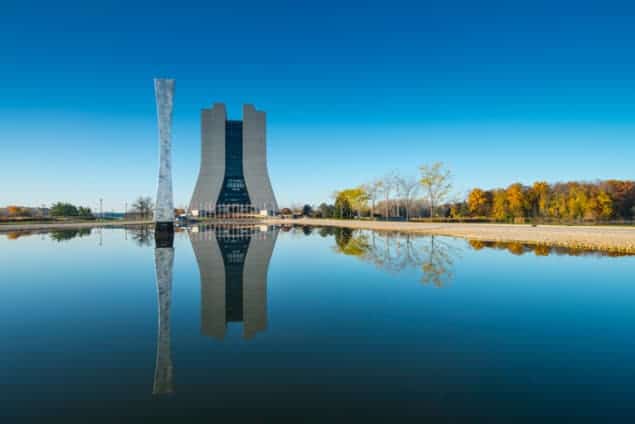
High-energy particle physicists in the US must build further international collaborations and co-operation, according to recommendations made by the Particle Physics Project Prioritization Panel’s (P5) 2014 report, which was released yesterday. Top priorities over the next two decades include the US playing a vital role in upgrades to the Large Hadron Collider (LHC) at CERN in Switzerland and building a long-baseline neutrino facility based at Fermilab near Chicago. The report also calls for US participation in the planned International Linear Collider (ILC), should the project commence. In light of declining funding and tightened budgets for particle physics, the report presents a strategy that would allow the US to “invest purposefully in areas that have the biggest impacts and that make most efficient use of limited resources”.
P5 is part of the US Department of Energy’s High Energy Physics Advisory Panel (HEPAP). Since P5 presented its last report in 2008, the face of high-energy particle physics has changed and evolved, especially in light of the discovery of the Higgs boson particle at CERN.
Main drivers
The 25-member panel began its deliberations in September 2013 following a year-long, community-wide study known as “Snowmass”. Snowmass identified 11 groups of particle-physics questions that could be addressed, and P5 then whittled them down to create the five “drivers” that the panel feel show great promise for discovery in the next two decades.
The drivers are to use the Higgs boson as a new tool for discovery; to pursue the physics associated with neutrino mass; to identify dark matter; to lay the foundations for understanding dark energy and inflation; and finally, to “explore the unknown”, including the study of new particles. While the five “intertwined” drivers themselves were not prioritized in the report, the specific projects are categorized by construction costs as large (>$200M), medium ($50M–$200M) and small (<$50M), as well as a sequential list of large projects.
The list begins with the proposed “muon-to-electron-conversion experiment” or the Mu2e experiment at Fermilab and upgrades to the LHC. Following that is the wish for the US to host an international programme of neutrino research “that will attract the worldwide neutrino community, operating the world’s most powerful neutrino beam and, with international partners, building a major long-baseline neutrino facility complemented by multiple small, short-baseline neutrino experiments”. The panel has recommended that the current “Long-Baseline Neutrino Experiment” (LBNE) be redesigned as an internationally co-ordinated and funded programme called the Long-Baseline Neutrino Facility (LBNF). The report refers to LBNF as “the highest-priority large project in its timeframe”.
The P5 also suggests US participation in the development of an ILC in Japan, specifying that the US “should engage in modest and appropriate levels of ILC accelerator and detector design in areas where the US can contribute critical expertise”.
Varying scenarios
The report’s strategy also considers three different budgetary scenarios – if funding is constant for three years and then increases by 3% per year; if it is constant for three years and then increases by 2% per year; and finally, if funding is unconstrained. They also recommend investing a larger portion of the DOE’s high-energy physics budget in the construction of new experimental facilities, raising it from 16% to 25%.
The panel is quick to point out that the lowest budget scenario they outline is “precarious” and would be “close to the point beyond which the US would not be capable of hosting a large project while maintaining the other core program components”, and that this would, in turn, make the US “lose its position as a global leader in this field, and highly productive international relationships would be fundamentally altered”.
The report can be found on the P5 website.



